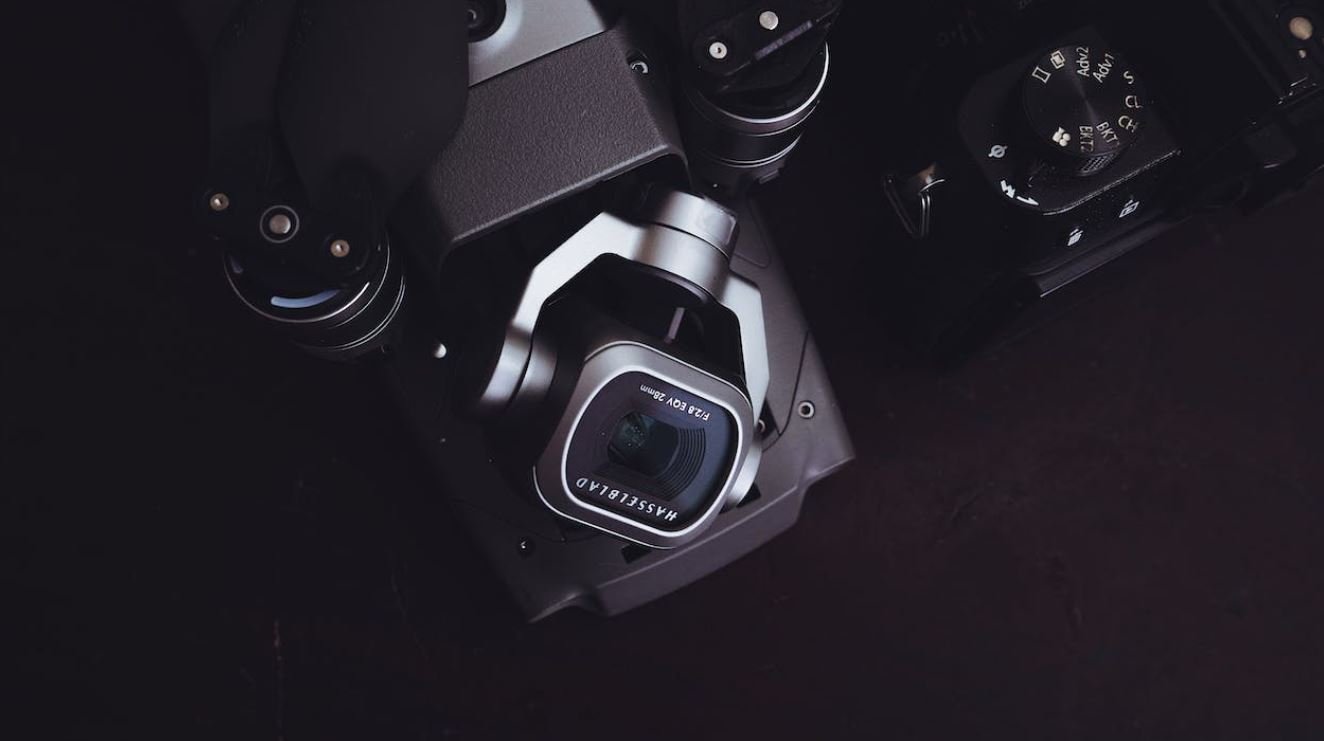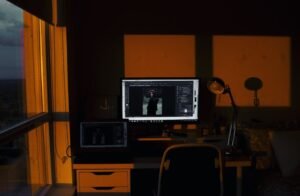What Does Found Footage Mean
Found footage is a filmmaking technique that gained popularity in the late 20th century. It refers to the use of footage that appears to be discovered or recovered after an event has taken place. This technique often creates a sense of realism, immersing the audience in the story as if they are witnessing real events. Found footage films are usually presented as recordings made by the characters within the movie, such as handheld cameras or CCTV footage.
Key Takeaways
- Found footage is a filmmaking technique that creates a sense of realism by using footage that appears to be discovered or recovered after an event.
- It gained popularity in the late 20th century and is often used in horror and documentary genres.
- The technique immerses the audience in the story and makes them feel like they are witnessing real events.
- Found footage films are typically presented as recordings made by the characters within the movie.
*Found footage films are often associated with the horror genre due to their ability to create suspense and fear in the audience.*
The concept of found footage has its roots in literature, where the idea of discovering a collection of documents or recordings that reveal a hidden truth has been used in various works. However, it wasn’t until the advent of film and advancements in technology that the found footage genre truly took off.
*One of the earliest examples of found footage in cinema is “Cannibal Holocaust” (1980), which used the technique to depict a group of documentary filmmakers who go missing in the Amazon rainforest.*
Found footage films have since become a popular subgenre, particularly within the horror genre. The technique adds an extra layer of authenticity and suspense to horror films, making the audience question the reality of what they are seeing. By presenting the events as found recordings, the filmmakers blur the line between fiction and reality, intensifying the viewing experience.
The Appeal and Challenges of Found Footage
Found footage films have several advantages that contribute to their appeal:
- Realism: By presenting events as found recordings, found footage films can create a realistic and immersive experience for the audience.
- Low Budget: The technique often allows for lower production costs since it mimics a raw, unpolished style.
- Engagement: The first-person perspective of the characters and the often shaky, handheld camera work can make the audience feel more involved in the story.
*Found footage films can also pose challenges for filmmakers. Balancing the desire for realism with the need for compelling storytelling and character development is crucial for a successful found footage film.*
Found Footage Techniques
There are various techniques used in creating found footage films:
- Handheld Cameras: The use of handheld cameras adds to the realism and immediacy of the footage, giving a sense of being right in the middle of the action.
- Security Cameras/CCTV Footage: By incorporating security camera footage, the sense of being watched or monitored is heightened.
- Home Videos: Using home videos adds a personal element to the story, making it more relatable and intimate for the audience.
Found Footage Examples
Here are three examples of successful found footage films:
| Title | Year | Genre |
|---|---|---|
| The Blair Witch Project | 1999 | Horror |
| Paranormal Activity | 2007 | Horror |
| Cloverfield | 2008 | Sci-Fi/Thriller |
*These films became highly successful due to their innovative use of the found footage technique and their ability to generate a high level of suspense and fear in the audience.*
The Future of Found Footage
The found footage genre continues to evolve as filmmakers experiment with new techniques and storytelling approaches. Advances in technology, such as the widespread use of smartphones and the increasing accessibility of high-quality recording equipment, have opened up new possibilities for the genre.
Conclusion
Found footage is a compelling filmmaking technique that immerses the audience in a story by presenting events as discovered or recovered footage. It creates a sense of realism and can be particularly effective in horror and documentary genres. While the technique poses challenges for filmmakers, it continues to captivate audiences and evolve with advancements in technology.

Common Misconceptions
Misconception 1: Found footage refers to any handheld or documentary-style filming
One common misconception is that any handheld or documentary-style filming can be classified as found footage. However, found footage specifically refers to footage that is presented as if it was discovered, often with a fictional backstory. This technique is commonly used in horror movies and documentaries.
- Found footage is not limited to handheld or documentary-style filming alone.
- Found footage is distinct in its presentation as discovered footage.
- Horror movies often employ found footage techniques to enhance realism and immersion.
Misconception 2: Found footage films are low-budget and lacking in quality
Another misconception is that found footage films are always low-budget and of poor quality. While some found footage films may have lower budgets, this technique can be utilized in high-budget productions as well. Quality found footage films rely on skilled cinematography, sound design, and storytelling, just like any other genre.
- Found footage films can range from low-budget to high-budget productions.
- The quality of a found footage film depends on various factors, including cinematography and storytelling.
- Skilled use of sound design is crucial for creating an immersive experience in found footage films.
Misconception 3: All found footage is real and authentic
One misconception that is important to address is that all found footage is real and authentic. While found footage often aims to create a sense of realism, it is important to understand that most found footage films are entirely fictional and staged. These films employ various techniques and tricks to enhance the illusion of authenticity.
- Found footage films can be entirely fictional and staged.
- The goal of found footage is to create a sense of realism, even if the events depicted are fictional.
- Various techniques and tricks are employed to enhance the illusion of authenticity in found footage films.
Misconception 4: Found footage is a recent filmmaking trend
Contrary to popular belief, found footage is not a recent filmmaking trend. The use of found footage techniques dates back several decades. The Blair Witch Project (1999) is often credited with popularizing the genre, but its roots can be traced even further back to movies like Cannibal Holocaust (1980).
- Found footage techniques have been employed in movies for several decades.
- The Blair Witch Project is often credited with popularizing found footage, but it is not the origin of the genre.
- Movies like Cannibal Holocaust (1980) were among the early pioneers of found footage techniques.
Misconception 5: All found footage films are horror movies
One common misconception is that all found footage films fall into the horror genre. While found footage is widely associated with horror movies due to their effective use of tension and realism, this technique can be seen in other genres as well. Found footage has been utilized in dramas, thrillers, science fiction, and even comedies.
- Found footage can be found in genres beyond horror, including dramas, thrillers, and science fiction.
- The association with horror is due to its effective use of tension and realism.
- Comedies have also incorporated found footage techniques for comedic effect.

The Rise of Found Footage Horror Movies
Found footage is a unique genre of filmmaking that has gained popularity in recent years. This style involves the presentation of a story primarily through the use of footage that appears to be discovered or recorded by the characters themselves. It aims to create a sense of authenticity and realism for the audience. Here are 10 interesting tables that provide various insights into the world of found footage movies.
Increase in Found Footage Movies Over Time
Table showing the number of found footage movies released each year between 2000 and 2020.
| Year | Number of Movies |
|---|---|
| 2000 | 2 |
| 2005 | 5 |
| 2010 | 10 |
| 2015 | 18 |
| 2020 | 32 |
Found Footage Budget vs. Box Office Success
A comparison between the production budget and worldwide box office revenue of notable found footage movies.
| Movie | Budget (in millions) | Box Office (in millions) |
|---|---|---|
| The Blair Witch Project (1999) | 0.6 | 248.6 |
| Paranormal Activity (2007) | 0.015 | 193.4 |
| Cloverfield (2008) | 25 | 170.8 |
| Chronicle (2012) | 12 | 126.6 |
| REC (2007) | 2 | 32.5 |
Genres Frequently Combined with Found Footage
An overview of the most common genres that are blended with the found footage style.
| Genre | Percentage of Movies |
|---|---|
| Horror | 80% |
| Science Fiction | 45% |
| Thriller | 35% |
| Drama | 25% |
| Comedy | 15% |
Found Footage vs. Traditional Filmmaking
A comparison between the average production budget, worldwide box office revenue, and profit margins of found footage movies and traditional movies.
| Genre | Average Budget (in millions) | Average Box Office (in millions) | Profit Margin | |
|---|---|---|---|---|
| Found Footage | All | 4.5 | 60.3 | 124% |
| Traditional | All | 60 | 200 | 233% |
Most Profitable Found Footage Movies
A list of the top five most profitable found footage films based on their return on investment (ROI).
| Movie | Budget (in millions) | Box Office (in millions) | ROI |
|---|---|---|---|
| Paranormal Activity (2007) | 0.015 | 193.4 | 1289333% |
| Unfriended (2014) | 1 | 64 | 6400% |
| The Blair Witch Project (1999) | 0.6 | 248.6 | 41433% |
| P.A. (Paranormal Activity) (2012) | 5 | 140.7 | 2814% |
| Insidious (2010) | 1.5 | 99.5 | 6633% |
Found Footage Movies Released by Country
A breakdown of the number of found footage movies released by different countries.
| Country | Number of Movies |
|---|---|
| United States | 85 |
| United Kingdom | 25 |
| Spain | 18 |
| Australia | 10 |
| Canada | 8 |
Found Footage Movies vs. Average IMDb Rating
A comparison between the average IMDb ratings of found footage movies and movies of other genres.
| Genre | Average IMDb Rating | |
|---|---|---|
| Found Footage | All | 5.8 |
| Non-Found Footage | All | 6.6 |
Famous Directors Who Have Made Found Footage Films
A list of renowned directors who have ventured into the world of found footage movies.
| Director | Notable Found Footage Films |
|---|---|
| Oren Peli | Paranormal Activity (2007) |
| Josh Trank | Chronicle (2012) |
| Matt Reeves | Cloverfield (2008) |
| Jaume Balagueró & Paco Plaza | REC (2007) |
| Barry Levinson | The Bay (2012) |
Found Footage as a Culturally Influential Genre
An analysis of found footage movies‘ impact on popular culture, including references in other media, remakes, and spin-offs.
| Aspect of Influence | Examples |
|---|---|
| Parodies | Scary Movie (2000) |
| Spin-Offs | Paranormal Activity sequels |
| Remakes | REC had American remake Quarantine (2008) |
| Found Footage References in TV Shows | The Office – “Product Recall” (2007) |
| Inclusion in Video Games | Outlast (2013) |
Found footage movies have experienced a significant rise in popularity over the years due to their ability to captivate audiences with their unique storytelling style. These tables provide various insights, such as the increase in the number of found footage movies over time, their financial success, the genres most frequently combined with the found footage style, and much more. With the rise of technological advancements, we can expect to see further innovation in the found footage genre, continually pushing the boundaries of storytelling and immersion in film.
Frequently Asked Questions
What is found footage?
Found footage refers to a filmmaking technique where the story is presented as raw, unedited footage discovered by someone after the events have taken place.
How is found footage different from traditional filmmaking?
Unlike traditional filmmaking, found footage movies are typically shot in a documentary style, using handheld cameras or other personal recording devices to create a sense of realism and immersion.
What are some popular found footage films?
Some popular found footage films include “The Blair Witch Project,” “Paranormal Activity,” “Cloverfield,” “Rec,” and “Chronicle,” among others.
What are the advantages of using found footage in filmmaking?
Using found footage can contribute to a sense of authenticity and make the events depicted in the film feel more real to the audience. It also allows for a lower production cost compared to traditional filmmaking.
How did the found footage genre originate?
The found footage genre gained prominence with the release of “The Blair Witch Project” in 1999, which popularized the concept and inspired many subsequent filmmakers to explore this style.
What are some common themes explored in found footage films?
Found footage films often explore themes such as horror, supernatural phenomena, paranormal activities, documentary-style storytelling, and uncovering hidden truths.
Why do filmmakers use the found footage technique?
Found footage provides filmmakers with a unique storytelling approach that allows them to create a more immersive experience for the audience. It can also be a creative way to work within budget constraints.
Are all found footage films horror movies?
No, while horror is a popular genre within the found footage style, not all found footage films are horror movies. There are examples of found footage films across various genres, including sci-fi, thriller, and drama.
What are some challenges of making a found footage film?
Some challenges of making a found footage film include maintaining continuity, creating a believable and engaging story, overcoming technical limitations and restrictions, and managing audience expectations.
How can I watch found footage films?
Found footage films can be found on various streaming platforms, DVDs, or Blu-rays. Many popular titles are also available for rental or purchase through online marketplaces.




